Wrinkle Treatment in Ireland
Search and Compare the Best Clinics and Doctors at the Lowest Prices for Wrinkle Treatment in Ireland

Find the best clinics for Wrinkle Treatment in Ireland
No clinics available
Thailand offers the best prices Worldwide
Price: $ 53

- Home
- Ireland
Compare Before & After Photos of _procedure_photos.phpWrinkle Treatment
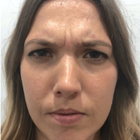
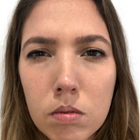
Front view
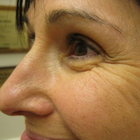

Half-side view
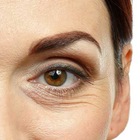
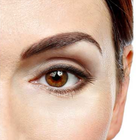
Front view


Half-side view

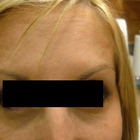
Front view

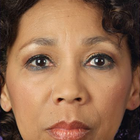
Front view
WHY US?
At Medijump, we're making medical easy. You can search, compare, discuss, and book your medical all in one place. We open the door to the best medical providers worldwide, saving you time and energy along the way, and it's all for FREE, no hidden fees, and no price markups guaranteed. So what are you waiting for?

Free

Best Price

Widest Selection

Risk-Free
What you need to know about Wrinkle Treatment in Ireland
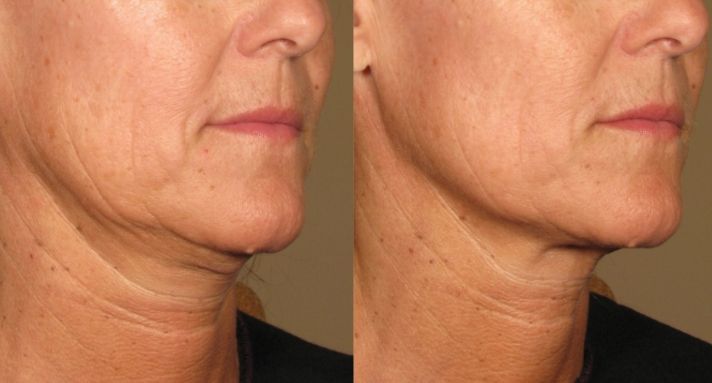
Ultherapy is an FDA-approved non-invasive skin tightening treatment. Known as the non-surgical alternative to facelift surgery, Ultherapy uses a focused ultrasound beam to boost collagen production in the deeper layers of your skin. Collagen is a natural protein that comes in numerous different types. It gives firmness and tightness to your skin. As we grow old, collagen loses its strength and firmness and shows laxity. This procedure gives collagen its strength back.
While a facelift offers more obvious results, it leaves scars and has other associated risks such as nerve damage and clot formation. Ultherapy, on the other hand, requires plenty of time to make its effects visible. Also, more sessions are needed to maintain its effects. It strengthens the loose skin of your face and neck and nullifies the effects of ageing on your face. It has the advantage that there is no downtime for it. You can apply makeup immediately after the procedure. This procedure needs to be repeated every six months or a year.
Ultherapy tightens and strengthens your loose skin without giving incisions and stitches. Instead, a focused ultrasound beam is used to lift your skin. Before going through the therapy, you have a lower eyebrow line, droopy lower eyelid, flat saggy cheeks, and loose skin of the neck. After Ultherapy, your skin looks glowing and rejuvenated, cheeks look healthy and plumped, and eyelids look lifted.
What does a Wrinkle Treatment Procedure Involve?
The procedure begins with cleaning your skin with an alcohol swab to kill any germs present at the spot. A specialized gel is applied to your skin. The focused ultrasound beam is used to produce thermal effects in the deeper layers of skin. The device is pressed firmly on to the skin of areas that needs strengthening. This induces new collagen production in these layers and gives firmness to the previous one. Ultrasound rays are applied over the areas where skin tightening is intended, such as the face and the neck. The time of procedure varies with the areas which are to be treated. It produces thermal effects which can be the cause of discomfort during the process. It lasts for a small period of time when the energy is being delivered into skin layers. This slight discomfort is a sign that the collagen-boosting process has been started.
How Long Should I Stay in Ireland for a Wrinkle Treatment Procedure?
Ultherapy takes 1 to 1.5 hours or more depending upon the dimensions of the area which is being treated. Since it is an outpatient procedure, you can leave for home on the same day of the treatment. However, you should plan to stay in Ireland for at least 5 days after your procedure. This will allow for the initial recovery and follow-up check-ups. Slight swelling and discomfort are normal during your stay. However, if it aggravates, there might be something wrong. Your health conditions are monitored during this duration.
What's the Recovery Time for Wrinkle Treatment Procedures in Ireland?
As there is no downtime, you need not take any day off from work. You can get back to work immediately after the therapy. Minimal bruising is reported at the sites of Ultherapy where bones are present. This discomfort is for a small period of time. There might be tenderness and swelling in your skin which can last for one month after the procedure. 3 to 6 months are required for the results to become evident. Keep in mind that everyone continues to age and no process or treatment can stop aging. Therefore, the effects of Ultherapy subsides after a few years. Touch up treatments help to maintain its effects.
What sort of Aftercare is Required for Wrinkle Treatment Procedures in Ireland?
After going through Ultherapy, take care of the following points to look after you:
- Avoid contact with direct sunlight for 2 to 3 months after this therapy. At the first place do not go outside in day time. If it is necessary, wear a strong sunscreen to protect your skin from harmful rays of light.
- Do not apply any product on your skin which can cause allergy or irritation.
- Use icepacks to ease you from itching and swelling. They are very effective in reducing redness.
- Do not massage and rub your skin for at least 1 to 2 weeks. It can aggravate redness and irritation in your skin.
- Cover yourself properly when going out after the procedure.
- Moisturize your skin twice or thrice a day. Use a moisturizer prescribed by your doctor.
What's the Success Rate of Wrinkle Treatment Procedures in Ireland?
This therapy is almost always successful. Results vary and their time of appearance varies. Some people show more positive results while others show a moderate difference in their physical appearance. But it works on all. According to a study, 65% of the patients reported improvement in their skin quality after 2 to 8 months. While 67% seemed very satisfied with the results after only 3 months. The success of Ultherapy depends upon your genes and other factors too.
Are there Alternatives to Wrinkle Treatment Procedures in Ireland?
The following are some alternatives to Ultherapy:
- Microcurrent facelift: this involves electrical stimulation of your tissues, skin, and muscles to increase their tone and impart a rejuvenating effect. Also, electrical current boosts collagen production and increases blood circulation in your body. It shows immediate results which can last for 48 hours only. You can opt for it for special events.
- Dermal fillers: also known as a liquid facelift, dermal fillers such as Sculptra, Juvederm, and Restylane are injected into your skin to give your facial features a lift. It treats wrinkles and aging lines on your skin. Each dermal filler works differently in different parts of your body.
- Laser facelift: laser light is used to stimulate inner layers of your skin to boost collagen production. This requires 30 minutes with no downtime.
All the techniques mentioned above are minimally invasive with almost no downtime, pain and incisions.
Overall, you will look younger than your actual age. But its effects last for only 12 to 15 months, after which you will need touch ups.
Whilst the information presented here has been accurately sourced and verified by a medical professional for its accuracy, it is still advised to consult with your doctor before pursuing a medical treatment at one of the listed medical providers
No Time?
Tell us what you're looking for and we'll reachout to the top clinics all at once
Enquire Now

Popular Procedures in Ireland
Prices Start From $111

Prices Start From $16

Prices Start From $28

Prices Start From $5

Recommended Medical Centers in Ireland for procedures similar to Wrinkle Treatment

- Interpreter services
- Translation service
- Religious facilities
- Medical records transfer
- Medical travel insurance
- Health insurance coordination
- TV in the room
- Safe in the room
- Phone in the room
- Private rooms for patients available

- Interpreter services
- Translation service
- Religious facilities
- Medical records transfer
- Medical travel insurance
- Health insurance coordination
- TV in the room
- Safe in the room
- Phone in the room
- Private rooms for patients available

- Interpreter services
- Translation service
- Religious facilities
- Medical records transfer
- Medical travel insurance
- Health insurance coordination
- TV in the room
- Safe in the room
- Phone in the room
- Private rooms for patients available

- Interpreter services
- Translation service
- Religious facilities
- Medical records transfer
- Medical travel insurance
- Health insurance coordination
- TV in the room
- Safe in the room
- Phone in the room
- Private rooms for patients available

- Interpreter services
- Translation service
- Religious facilities
- Medical records transfer
- Medical travel insurance
- Health insurance coordination
- TV in the room
- Safe in the room
- Phone in the room
- Private rooms for patients available

- Interpreter services
- Translation service
- Religious facilities
- Medical records transfer
- Medical travel insurance
- Health insurance coordination
- TV in the room
- Safe in the room
- Phone in the room
- Private rooms for patients available

- Interpreter services
- Translation service
- Religious facilities
- Medical records transfer
- Medical travel insurance
- Health insurance coordination
- TV in the room
- Safe in the room
- Phone in the room
- Private rooms for patients available

- Interpreter services
- Translation service
- Religious facilities
- Medical records transfer
- Medical travel insurance
- Health insurance coordination
- TV in the room
- Safe in the room
- Phone in the room
- Private rooms for patients available
Wrinkle Treatment in and around Ireland
Introduction
Ireland, also known as the Republic of Ireland, is a country located in north-western Europe that occupies 26 of 32 counties on the island of Ireland. The country’s breath-taking landscape, wonderful people, and fascinating history have made it an unforgettable destination for many visitors. Aside from its beauty, more and more people also come to Ireland for high-quality healthcare. The country is a newcomer to the medical tourism market. However, it’s seen as an increasingly attractive destination due to the reasonably priced and high standard of clinical care available in the country. Most foreign patients come for cosmetic surgery and dental treatments, but many hospitals and clinics in the country offer a wide variety of services, such as cardiology, pathology, pulmonary, and gynecology. Also, the Joint Commission International has accredited several hospitals in the country, most of which are located in Dublin.
Popular Cities and Regions in Ireland
Ireland’s capital and largest city, Dublin, is the most popular tourist destination within the country. In fact, it’s the fourth most visited European capital. It’s filled with excellent pubs serving the perfect pint of Guinness, amazing Georgian architecture, and layers of fascinating history. Tourists in this city usually visit the Guinness Storehouse Factory, tour the Old Jameson Distillery, admire the Spire of Dublin, explore Dublin Castle, and marvel at the beauty of St. Patrick’s Cathedral. Another famous city is Cork, which is the second-largest city in the country. It’s a youthful cosmopolitan city packed with artisan coffee bars and snug pubs. Tourists usually come to kiss the Blarney Stone for good luck, enjoy the coastal landscape in Mizen Head, or hike around Gougane Barra. Other popular cities and towns include Galway, Killarney, Kilkenny, and Letterkenny.
Transport in Ireland
The main airport in Ireland is Dublin Airport. It connects the country with numerous cities around the world, including New York, Abu Dhabi, and Hong Kong. Trains and buses are available to travel around the country. However, public transportation is generally sparse in rural areas. Therefore, renting a car is the best mode of transport. Taxis and Uber are available to travel inside major cities.
Visas in Ireland
Ireland has opted out of the Schengen Area. The country allows all EU citizens, as well as citizens of 56 other countries (such as the UAE and the US), to stay without a visa for up to 90 days. Citizens of other countries are required to apply for a visa in advance.
Weather in Ireland
Summer (June – September) provides plenty of sunshine and lower levels of rainfall, with an average temperature of 14°C - 16°C. Winter (October – February) is chilly, with ample rainfall and some snow. Spring and autumn are generally pleasant, with warmer temperatures and more sunshine.
Additional Info
- Local Currency: The official currency is the euro. 1 EUR is approx. 1.08 USD.
- Money & Payments: ATMs are easy to find. Credit and debit cards are widely accepted. Tipping is expected in some places, typically 10% for decent service.
- Local Language: There are several languages used in Ireland. English has been the predominant first language since the late 18th century, but Irish is still widely used by a small percentage of the population.
- Local Culture and Religion: The constitution of Ireland guarantees freedom of religion. Christianity is the largest religion. However, Islam, Hinduism, Judaism, Buddhism, Neo-Paganism, and other religions are present.
- Public Holidays: Some of the most celebrated public holidays are New Year’s Day, St. Patrick’s Day, Easter Monday, Christmas Day, and St. Stephen’s Day.
Popular Searches
- Plastic Surgery in Thailand
- Dental Implants in Thailand
- Hair Transplant in Thailand
- Breast Augmentation Thailand
- Gastric Sleeve in Thailand
- Gender Reassignment Surgery in Thailand
- Laser Hair Removal in Bangkok
- Botox in Bangkok
- Dermatology in Bangkok
- Breast Augmentation in Bangkok
- Coolsculpting in Bangkok
- Veneers in Turkey
- Hair Transplant in Turkey
- Rhinoplasty in Turkey
- Stem Cell Therapy in Mexico
- Rhinoplasty in Mexico
- Liposuction in Mexico
- Coolsculpting in Tijuana
- Rhinoplasty in Korea
- Scar Removal in Korea
- Gastric Sleeve in Turkey
- Bone Marrow Transplant in India
- Invisalign in Malaysia
- Plastic Surgery in the Dominican Republic
- Tummy Tuck in the Dominican Republic
- Plastic and Cosmetic Surgery in Poland
- Rhinoplasty in Poland
- Hair Implant in Poland
- Dental Implants in Poland
- IVF in Turkey